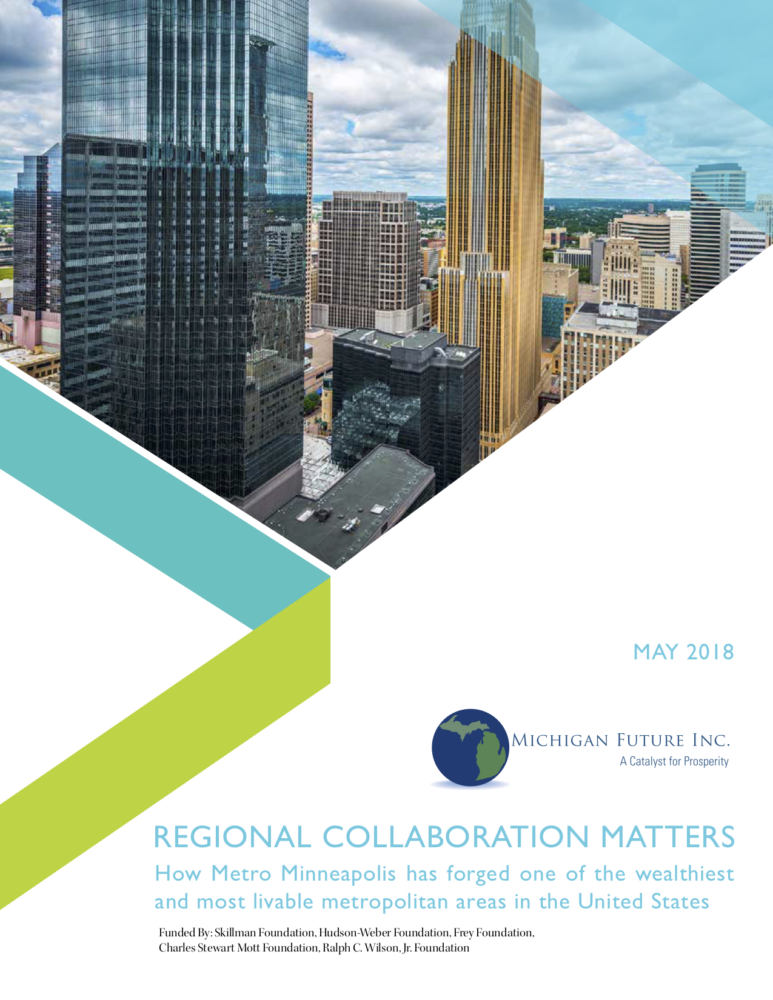![]() Last year we published our first-ever state policy recommendations. Our motivation for doing so is a sense of urgency that across the political spectrum we need a different set of policy options. Ideas not about how we can turn the clock back and make the old economy work again, but rather ideas about how we can position all Michiganders for economic success in an economy being constantly altered by smarter and smarter machines taking over work traditionally done by humans.
Last year we published our first-ever state policy recommendations. Our motivation for doing so is a sense of urgency that across the political spectrum we need a different set of policy options. Ideas not about how we can turn the clock back and make the old economy work again, but rather ideas about how we can position all Michiganders for economic success in an economy being constantly altered by smarter and smarter machines taking over work traditionally done by humans.
We are committed to the goal of re-creating a high prosperity Michigan. We believe the goal of state economic policy should be raising household income for all Michiganders. High prosperity is different from the most often used measure for economic success, low unemployment. It is being a place with a broad middle class where wages and benefits allow one to pay the bills, save for retirement and the kids’ education and pass on a better opportunity to the next generation.
For years we have used Minnesota as a comparison state, because it is the Great Lakes state (taking weather and the excuse that Michigan can’t be like the coasts off the table) that has enjoyed the best economic outcomes, by far. We began our policy work with a case study of Minnesota.
We asked Rick Haglund to do this initial case study. For decades, Rick was one of the best journalists—if not the best—covering the Michigan economy. He brings a deep understanding of how state economies work and the role policy plays in shaping the economy.
That report proved so successful that we asked Rick to follow it up with a case study of the policies that have made metro Minneapolis the most successful region in the Great Lakes. The difference in economic outcomes between Minnesota and Michigan can largely be explained by the superior performance of metro Minneapolis compared to metro Detroit and metro Grand Rapids. Metro Minneapolis is 12th in per capita income among the 53 regions with a population of 1 million or more, best in the Great Lakes states. Metro Detroit is 30th, metro Grand Rapids 38th.
In addition to exploring the Twin Cities’ approach to taxation and spending, education, placemaking and being welcoming to all—the topics we have identified for years as critical to economic well-being—we asked Rick to explore two additional topics. First, regionalism in metro Minneapolis. For years, Minneapolis’ approach to regionalism—particularly tax-base sharing—has been viewed as a major ingredient in that region’s economic success. And second, business leadership. The Twin Cities also has a national reputation for big company CEO leadership on issues beyond the typical business-friendly agenda. We wanted to learn much more about that.
We are excited about the report Rick has produced. Our hope is that it will expand the conversation in Michigan and its regions about what economic policy should be to return Michigan to prosperity in an economy being transformed by globalization and technology.
The big picture takeaways from the report are:
- The combination of education attainment, placemaking and welcoming are the most important ingredients to economic prosperity rather than low taxes or more broadly being a low-cost place to operate a business
- Even in a strong economy, structurally there are lots of households struggling. The need to share prosperity doesn’t go away with a strong economy.
- Economies are regional and that the most prosperous places are going to be those who work together to build both strong suburbs and strong central cities
- Business leadership matters enormously. The ability to deal with the three topics listed above is greatly enhance when you have big business CEOs pushing an agenda designed to create an economy that benefits everyone, rather than primarily focused on the normal business friendly agenda.
In the coming weeks this blog will be written by Rick as he explores the lessons we should learn on how the Twin Cities came to be ranked at or near the top among the nation’s large metro areas in a variety of livability measures, including per capita income, educational attainment, transit, quality of government services, and amenities such as parks and bike trails.







